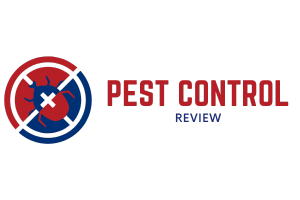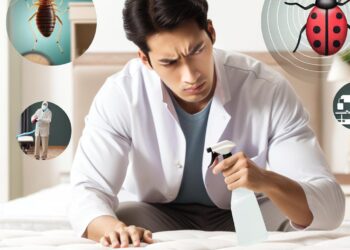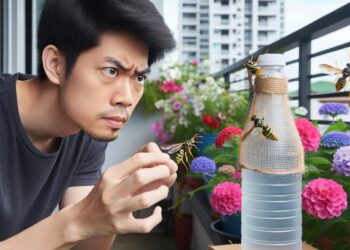Introduction:
Pest control has been a major concern for both residential and commercial properties. The use of pesticides and chemicals in controlling pests has been the traditional approach. However, with increasing environmental concerns, there is a need to find eco-friendly pest control methods that do not harm the environment or wildlife. In this article, we will explore the connection between pest control and environmental sustainability, including the use of eco-friendly products and methods.
The Importance of Environmental Sustainability:
Environmental sustainability is the practice of using natural resources in a way that meets the needs of the present generation without compromising the ability of future generations to meet their own needs. This means that any practice, including pest control, must be sustainable to preserve the environment for future generations.

The Connection between Pest Control and Environmental Sustainability:
Traditional pest control methods, including the use of pesticides, can have a negative impact on the environment. Pesticides can harm wildlife, reduce biodiversity, and pollute water sources. They can also have adverse effects on human health. Therefore, using eco-friendly pest control methods is essential to achieving environmental sustainability.
Eco-Friendly Pest Control Methods:
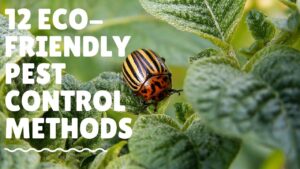
Eco-friendly pest control methods are those that use natural or non-toxic substances to control pests. They include:
- Biological control: This involves using natural predators, parasites, or pathogens to control pests. For example, using ladybirds to control aphids on plants.
- Cultural control: This involves modifying the environment to make it less attractive to pests. For example, using mulch to suppress weed growth, which in turn reduces the habitat for pests.
- Physical control: This involves using physical barriers or traps to control pests. For example, using mosquito nets to prevent mosquito bites.
- Eco-friendly products: These are products that are made from natural or non-toxic substances, such as essential oils, to control pests. For example, using peppermint oil to repel ants.
Benefits of Using Eco-Friendly Pest Control Methods: Using eco-friendly pest control methods has several benefits, including:
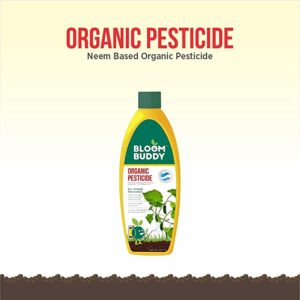
- Reduced environmental impact: Eco-friendly pest control methods do not harm the environment or wildlife.
- Safer for human health: Eco-friendly pest control methods do not pose a risk to human health.
- Sustainable: Eco-friendly pest control methods are sustainable and do not deplete natural resources.
- Cost-effective: Eco-friendly pest control methods can be cost-effective in the long run as they reduce the need for frequent pest control treatments.
Examples of Eco-Friendly Pest Control Methods:
- Biological Control:
Biological control is the use of natural enemies to control pests. This method is effective because it targets the pests specifically, leaving other organisms unharmed. Examples of biological control methods include the use of predators, parasites, and pathogens.
One example of biological control is the use of nematodes to control soil-dwelling pests like grubs and cutworms. Nematodes are tiny worms that can be applied to the soil where they seek out and infect their host. Once infected, the pest dies, and the nematodes multiply and move on to new hosts.
Another example of biological control is the use of Bacillus thuringiensis (Bt) to control caterpillars. Bt is a bacteria that produces a protein that is toxic to certain insects. When the caterpillars ingest the bacteria, they stop feeding and eventually die.
- Cultural Control:
Cultural control involves modifying the environment to make it less attractive to pests. This method is effective because it addresses the underlying cause of the pest problem, rather than just treating the symptoms.
Examples of cultural control methods include crop rotation, planting pest-resistant varieties, and removing pest habitats.

Crop rotation involves planting different crops in a field each year to disrupt the pest’s life cycle. This makes it difficult for the pests to establish themselves in the area.
Planting pest-resistant varieties involves selecting plant varieties that are less attractive to pests. This reduces the need for pest control measures.
Removing pest habitats involves removing or altering the conditions that pests need to survive. For example, removing standing water can reduce the number of mosquitoes in an area.
- Physical Control:
Physical control involves using physical barriers or traps to control pests. This method is effective because it prevents pests from accessing the area or captures them without the use of toxic chemicals.
Examples of physical control methods include using screens, traps, and exclusion barriers.
Using screens on windows and doors can prevent flies and mosquitoes from entering a building.
Traps can be used to capture rodents or insects. For example, sticky traps can be used to capture cockroaches, and snap traps can be used to capture mice.
Exclusion barriers can be used to prevent pests from entering an area. For example, sealing cracks and crevices can prevent ants from entering a building.
- Eco-Friendly Products:
Eco-friendly products are products that are made from natural or non-toxic substances, such as essential oils, to control pests. This method is effective because it is safe for humans and pets and does not harm the environment.
Examples of eco-friendly products include diatomaceous earth, essential oils, and vinegar.
Diatomaceous earth is a naturally occurring powder that is made from the fossilized remains of diatoms. It works by dehydrating the exoskeleton of insects, causing them to die.
Essential oils, such as peppermint, lavender, and tea tree, can be used to repel insects. For example, peppermint oil can be used to repel ants.
Vinegar can be used to clean surfaces and repel insects. For example, a solution of vinegar and water can be used to clean surfaces, and a mixture of vinegar and water can be used to repel fruit flies.
The Importance of Integrated Pest Management (IPM):
Integrated pest management (IPM) is an approach to pest control that combines several methods, including biological, cultural, and physical control, with the judicious use of pesticides. The goal of IPM is to control pests while minimizing the impact on the environment and human health.

Conclusion:
The use of eco-friendly pest control methods is essential to achieving environmental sustainability. Traditional pest control methods, including the use of pesticides, can harm the environment, wildlife, and human health. Eco-friendly pest control methods are sustainable, cost-effective, and safer for human health. By adopting these methods, we can control pests while preserving the environment for future generations.
